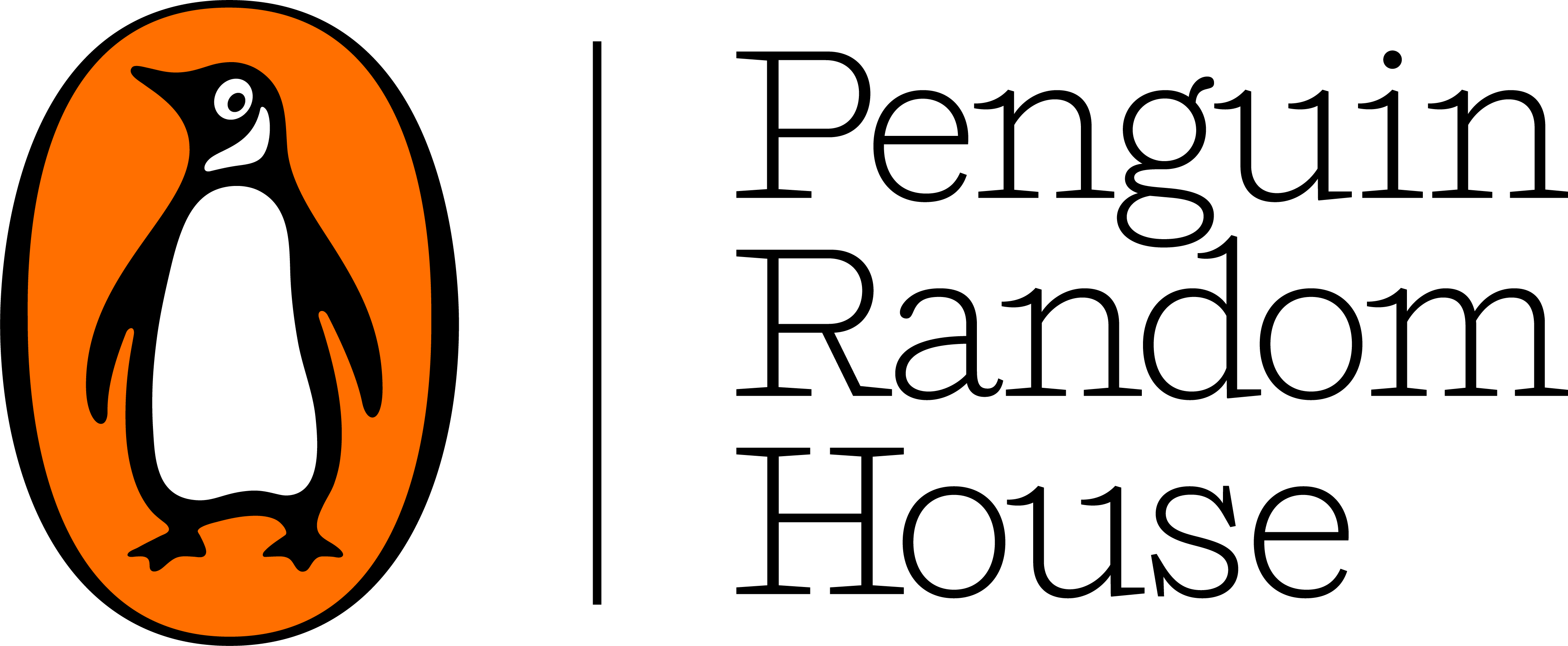How Pantheon’s Lexy Bloom Brought Hanan al-Shaykh’s New Novel to American Readers
July 10, 2018
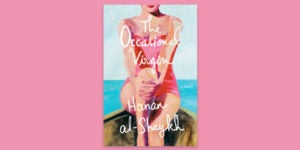 THE OCCASIONAL VIRGIN is a frank and fearless novel from acclaimed writer Hanan al-Shaykh, published today by Pantheon. The book’s storyline follows the tumultuous lives and sometimes shocking choices of two women, successful in their careers but unlucky in love.
THE OCCASIONAL VIRGIN is a frank and fearless novel from acclaimed writer Hanan al-Shaykh, published today by Pantheon. The book’s storyline follows the tumultuous lives and sometimes shocking choices of two women, successful in their careers but unlucky in love.
In this Three Questions for an Editor interview, Lexy Bloom, Senior Editor/Senior Culinary Editor, Knopf, Pantheon, Vintage, Anchor, offers insights into her editorial work with the author, the process of transforming what was originally a short story into THE OCCASIONAL VIRGIN, and the ways in which this book will resonate with American readers. Read on.
expand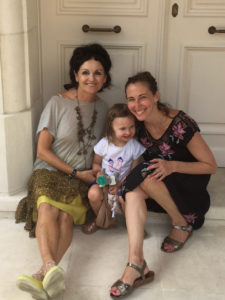 Hanan al-Shaykh (left) with Lexy Bloom and Lexy’s daughter Clio, at the author’s home in the South of France.[/caption]
As I explain above, the editorial process for this book was a little unusual – so it won’t be surprising that the translation process followed accordingly. I edit a lot of translations and typically, the bulk of my editorial work is with the translator. In this case, although Arabic is Hanan’s first language and the one in which she chooses to write, she is also fluent in English, so there is no need for the translator to act as a go-between. Once Hanan completes a draft, she works directly with her translator, Catherine Cobham, on the English-language version. When Hanan is happy with it, she sends it to me, along with her British editors, and we work on rounds of edits together, in English. In the case of THE OCCASIONAL VIRGIN, we undertook several rounds of edits, and for the first round or so, Hanan went back to Catherine for translation help. But at a certain point, we began to work on our edits directly.
Ultimately we came to see the book as a diptych – two works that connected into one larger story, with a conversation ongoing between each half. The first, with Huda and Yvonne by the sea in Italy, is the set-up – the way we begin to understand how their childhood experiences affected who they are today. The second, which takes place in London, is the response. A chance encounter at Speaker’s Corner makes each of them do very shocking things, and the second half deals with this encounter, and the events that unfold.
The primary characters, with their unorthodox personal choices and entanglements, straddle different cultures and conflicting worlds. What aspects of this novel do you feel will resonate most strongly with readers and why?
At its heart, this is a story about two friends. I always come back to the short story that was the germ for the novel – a story about two women by the sea. These women, Huda and Yvonne, chose to leave behind their families and make new lives for themselves elsewhere, in other parts of the world, in other languages. We meet them when they are in their late 30s, at the top of their careers – Huda is a theater director in Toronto and Yvonne is an advertising executive in London. But they have both been unlucky in love. Huda can’t commit to being in a relationship, and it is her natural instinct to play tricks on the men she’s involved with, which, as you might imagine, gets her in all sorts of trouble. Yvonne, on the other hand, is desperate to have a baby, and this desire is so strong that it has become blinding. As a result, she’s making terrible choices when it comes to men, and nothing is working out.
The scenario I’ve just described is pretty universal: two women sorting out the balance between work and love, particularly as they reach their late 30s and the pressure of their biological clocks makes their choices carry much more weight. I think this will resonate with anyone who reads it. Where THE OCCASIONAL VIRGIN is distinct, however, is in the characters’ back stories – the strict childhoods that Huda and Yvonne had in Lebanon, the families and cultures they’ve chosen to leave behind, and how that break will never be clean. Just as the book’s structure has two distinct parts, it is the dichotomy that makes this story unique – but also what I think will make it resonate with American readers most of all.
Hanan al-Shaykh (left) with Lexy Bloom and Lexy’s daughter Clio, at the author’s home in the South of France.[/caption]
As I explain above, the editorial process for this book was a little unusual – so it won’t be surprising that the translation process followed accordingly. I edit a lot of translations and typically, the bulk of my editorial work is with the translator. In this case, although Arabic is Hanan’s first language and the one in which she chooses to write, she is also fluent in English, so there is no need for the translator to act as a go-between. Once Hanan completes a draft, she works directly with her translator, Catherine Cobham, on the English-language version. When Hanan is happy with it, she sends it to me, along with her British editors, and we work on rounds of edits together, in English. In the case of THE OCCASIONAL VIRGIN, we undertook several rounds of edits, and for the first round or so, Hanan went back to Catherine for translation help. But at a certain point, we began to work on our edits directly.
Ultimately we came to see the book as a diptych – two works that connected into one larger story, with a conversation ongoing between each half. The first, with Huda and Yvonne by the sea in Italy, is the set-up – the way we begin to understand how their childhood experiences affected who they are today. The second, which takes place in London, is the response. A chance encounter at Speaker’s Corner makes each of them do very shocking things, and the second half deals with this encounter, and the events that unfold.
The primary characters, with their unorthodox personal choices and entanglements, straddle different cultures and conflicting worlds. What aspects of this novel do you feel will resonate most strongly with readers and why?
At its heart, this is a story about two friends. I always come back to the short story that was the germ for the novel – a story about two women by the sea. These women, Huda and Yvonne, chose to leave behind their families and make new lives for themselves elsewhere, in other parts of the world, in other languages. We meet them when they are in their late 30s, at the top of their careers – Huda is a theater director in Toronto and Yvonne is an advertising executive in London. But they have both been unlucky in love. Huda can’t commit to being in a relationship, and it is her natural instinct to play tricks on the men she’s involved with, which, as you might imagine, gets her in all sorts of trouble. Yvonne, on the other hand, is desperate to have a baby, and this desire is so strong that it has become blinding. As a result, she’s making terrible choices when it comes to men, and nothing is working out.
The scenario I’ve just described is pretty universal: two women sorting out the balance between work and love, particularly as they reach their late 30s and the pressure of their biological clocks makes their choices carry much more weight. I think this will resonate with anyone who reads it. Where THE OCCASIONAL VIRGIN is distinct, however, is in the characters’ back stories – the strict childhoods that Huda and Yvonne had in Lebanon, the families and cultures they’ve chosen to leave behind, and how that break will never be clean. Just as the book’s structure has two distinct parts, it is the dichotomy that makes this story unique – but also what I think will make it resonate with American readers most of all. Ballantine’s Susanna Porter on the Making of LOVE AND RUIN, Starring Hemingway and Gellhorn
May 2, 2018
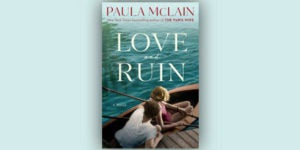 In LOVE AND RUIN, Paula McLain, the bestselling author of The Paris Wife, returns to the subject of Ernest Hemingway in a novel about his passionate, stormy marriage to Martha Gellhorn—a fiercely independent, ambitious young woman who would become one of the greatest war correspondents of the twentieth century.
In LOVE AND RUIN, Paula McLain, the bestselling author of The Paris Wife, returns to the subject of Ernest Hemingway in a novel about his passionate, stormy marriage to Martha Gellhorn—a fiercely independent, ambitious young woman who would become one of the greatest war correspondents of the twentieth century.
In this “Three Questions for an Editor” interview, Ballantine Vice President & Executive Editor Susanna Porter pulls back the curtain and offers a look at the editing of this absorbing historical novel, the process of working with the author, and how LOVE AND RUIN may resonate with today’s readers.
expand Susanna Porter[/caption]
I love history and have always adored fiction set in a historical context, way back to when I read everything from Jane Austen to The Agony and the Ecstasy and Gone with the Wind as a teenager. As a young reader and still today I love the way historical fiction takes me to and teaches me about a time and place that I would otherwise never know.
Having edited quite a few such novels by this point, I realize what a fine balance it is for an author to make use of the historical and biographical realities, but not to rely on them to the extent that the novel gets that, “And then this happened, and then this…” quality. The novel has to break free of chronological bonds and establish its own narrative arc, and that means dwelling on some of the characters’ life events—their family, their lovers, their work-- and completely cutting out others.
As for my initial reaction to the characters of Gellhorn and Hemingway, in this case I was well prepared for a Hemingway marriage, thanks to having been Paula’s editor for The Paris Wife, a novel about Ernest’s relationship with his first wife Hadley. But talking of turbulent times, LOVE AND RUIN has a vivid background that encompasses the Spanish Civil War, World War II, Cuba, Finland and China, so there is no shortage of action in this story! So Paula didn’t need to worry about adding new dimensions—they were already there in spades.
How would you describe the editorial process while working with the author on this book?
As any editor will tell you, it’s a very different process working with an author on a second or third book than first time around. Dare I compare it, when it works, to a no-longer new marriage that is the happier for its relative predictability? Working with an author the first time around you’re more hands-off, and the author too is less sure about what you want and expect. By book #3, which is the case for LOVE AND RUIN, I edit frankly, confident that this author knows how much I love and am committed to her work and that we’re totally on the same team, no matter what particulars we might disagree on.
While LOVE AND RUIN is historical fiction, it feels genuine and true. What elements of the novel do you feel will resonate most strongly with today’s readers?
In addition to the colorful settings of this story, which transport the reader to some fascinating places and events, I would say the two aspects of the novel that will most resonate with today’s readers are first, Martha’s decision to start an affair with Ernest, against her better judgement. Most of us have done just that, intentionally ignoring the warning signals that our brain is trying to tell us! And second, when Martha finds herself in the all too common dilemma faced by women then and now: should she let her career and her own life’s ambitions take a back-seat to her relationship with the man she loves?
Check out Paula McLain’s national book tour appearances here.
Susanna Porter[/caption]
I love history and have always adored fiction set in a historical context, way back to when I read everything from Jane Austen to The Agony and the Ecstasy and Gone with the Wind as a teenager. As a young reader and still today I love the way historical fiction takes me to and teaches me about a time and place that I would otherwise never know.
Having edited quite a few such novels by this point, I realize what a fine balance it is for an author to make use of the historical and biographical realities, but not to rely on them to the extent that the novel gets that, “And then this happened, and then this…” quality. The novel has to break free of chronological bonds and establish its own narrative arc, and that means dwelling on some of the characters’ life events—their family, their lovers, their work-- and completely cutting out others.
As for my initial reaction to the characters of Gellhorn and Hemingway, in this case I was well prepared for a Hemingway marriage, thanks to having been Paula’s editor for The Paris Wife, a novel about Ernest’s relationship with his first wife Hadley. But talking of turbulent times, LOVE AND RUIN has a vivid background that encompasses the Spanish Civil War, World War II, Cuba, Finland and China, so there is no shortage of action in this story! So Paula didn’t need to worry about adding new dimensions—they were already there in spades.
How would you describe the editorial process while working with the author on this book?
As any editor will tell you, it’s a very different process working with an author on a second or third book than first time around. Dare I compare it, when it works, to a no-longer new marriage that is the happier for its relative predictability? Working with an author the first time around you’re more hands-off, and the author too is less sure about what you want and expect. By book #3, which is the case for LOVE AND RUIN, I edit frankly, confident that this author knows how much I love and am committed to her work and that we’re totally on the same team, no matter what particulars we might disagree on.
While LOVE AND RUIN is historical fiction, it feels genuine and true. What elements of the novel do you feel will resonate most strongly with today’s readers?
In addition to the colorful settings of this story, which transport the reader to some fascinating places and events, I would say the two aspects of the novel that will most resonate with today’s readers are first, Martha’s decision to start an affair with Ernest, against her better judgement. Most of us have done just that, intentionally ignoring the warning signals that our brain is trying to tell us! And second, when Martha finds herself in the all too common dilemma faced by women then and now: should she let her career and her own life’s ambitions take a back-seat to her relationship with the man she loves?
Check out Paula McLain’s national book tour appearances here. Hogarth’s Alexis Washam on How Jo Nesbø Transformed MACBETH
April 12, 2018
 The newest novel in the Hogarth Shakespeare Series is Jo Nesbø’s MACBETH, published on April 10. Set in the 1970s in a run-down, rainy industrial town, this gripping transformative take on one of Shakespeare’s bloodiest plays centers around a police force struggling to shed an incessant drug problem. Creating an engrossing story of love and guilt, political ambition, and greed for more, Nesbø explores the darkest corners of human nature, and the aspirations of the criminal mind.
The newest novel in the Hogarth Shakespeare Series is Jo Nesbø’s MACBETH, published on April 10. Set in the 1970s in a run-down, rainy industrial town, this gripping transformative take on one of Shakespeare’s bloodiest plays centers around a police force struggling to shed an incessant drug problem. Creating an engrossing story of love and guilt, political ambition, and greed for more, Nesbø explores the darkest corners of human nature, and the aspirations of the criminal mind.
In this “Three Questions for an Editor” interview, Alexis Washam, Executive Editor, Crown Publishers and Hogarth, offers insights into the Hogarth Shakespeare Series, the process of working with Nesbø on this project, and how readers may embrace the remarkable novel that was created. Read on.
expand When we first conceived of the Hogarth Shakespeare series, my colleagues here and in the UK agreed that we wanted to give the participating authors as much latitude as possible on this project. When we approached Jo, we asked him which Shakespeare play he would be most excited about retelling, and when he came back with MACBETH, we were both thrilled and not entirely surprised. It is, after all, one of the Bard’s bloodiest. Once we matched the author with the play, there was very little directive – basically, “write a novel!” - and I’ve been amazed to see how each book has come back with its author’s own unique take on his or her play. Nesbø is no different – he took a timeless tale of ambition and madness and set it in a police department in an atmospheric port town, and the result is a page-turning thriller that stands up to the best of them.
How would you describe working with the author as his editor as this book came to be?
[caption id="attachment_110713" align="alignright" width="197"]
When we first conceived of the Hogarth Shakespeare series, my colleagues here and in the UK agreed that we wanted to give the participating authors as much latitude as possible on this project. When we approached Jo, we asked him which Shakespeare play he would be most excited about retelling, and when he came back with MACBETH, we were both thrilled and not entirely surprised. It is, after all, one of the Bard’s bloodiest. Once we matched the author with the play, there was very little directive – basically, “write a novel!” - and I’ve been amazed to see how each book has come back with its author’s own unique take on his or her play. Nesbø is no different – he took a timeless tale of ambition and madness and set it in a police department in an atmospheric port town, and the result is a page-turning thriller that stands up to the best of them.
How would you describe working with the author as his editor as this book came to be?
[caption id="attachment_110713" align="alignright" width="197"]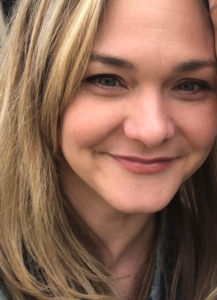 Alexis Washam[/caption]
It’s been a true honor to work with all of the authors on our Hogarth Shakespeare list, and each of them has been incredibly open and gracious about the editorial process. All of the books in the series are published in collaboration with my colleagues at Hogarth UK, so in the case of MACBETH, Jo delivered his manuscript, fully finished and translated by Don Bartlett, to myself and the UK editor at the same time. We both read it at once (it was exciting to be one of the first to read a new Nesbø novel!), and then sent along our editorial notes to Jo and his agent. There was not very much that needed changing, as you can imagine. But he took our thoughts into consideration, and we did a small bit of work on the opening chapter in particular. Since the setting and the cast of characters would be new to Nesbø fans, we wanted to make sure we got the first pages exactly right, so they’d be instantly drawn in.
We also had a conversation about the title: MACBETH is the only book in our series that shares its title with the play. At first, we weren’t sure about this exception, but after reading the manuscript it made sense. Since Jo had kept the names of the characters (he’s the only one who has done so, at least to this extent), we decided to stick with it. And it looks fantastic on a book cover!
What elements of Nesbø’s MACBETH do you think will resonate with longtime fans of his Harry Hole novels as well as readers – particularly Shakespeare devotees – who may be coming to his fiction for the first time?
Jo Nesbø’s novels are not just pulse-racing thrillers; his work has always explored the darkness and evil that is present in any seemingly functional society, and the chaos and infighting that serves as the backdrop to his MACBETH should be familiar to any fan of the play. Also, of course neither the play nor Nesbø’s work are strangers to violence – man’s worst impulses often result in murder and violent crime, and the Harry Hole novels and this new book make those acts of violence central to their plots. However, neither Nesbø nor Shakespeare was interested in bloodshed for its own sake; both in the original play and the novel, the character Macbeth’s deepest psychological demons and personal failings make for a compelling tale of a tragic fallen man.
Alexis Washam[/caption]
It’s been a true honor to work with all of the authors on our Hogarth Shakespeare list, and each of them has been incredibly open and gracious about the editorial process. All of the books in the series are published in collaboration with my colleagues at Hogarth UK, so in the case of MACBETH, Jo delivered his manuscript, fully finished and translated by Don Bartlett, to myself and the UK editor at the same time. We both read it at once (it was exciting to be one of the first to read a new Nesbø novel!), and then sent along our editorial notes to Jo and his agent. There was not very much that needed changing, as you can imagine. But he took our thoughts into consideration, and we did a small bit of work on the opening chapter in particular. Since the setting and the cast of characters would be new to Nesbø fans, we wanted to make sure we got the first pages exactly right, so they’d be instantly drawn in.
We also had a conversation about the title: MACBETH is the only book in our series that shares its title with the play. At first, we weren’t sure about this exception, but after reading the manuscript it made sense. Since Jo had kept the names of the characters (he’s the only one who has done so, at least to this extent), we decided to stick with it. And it looks fantastic on a book cover!
What elements of Nesbø’s MACBETH do you think will resonate with longtime fans of his Harry Hole novels as well as readers – particularly Shakespeare devotees – who may be coming to his fiction for the first time?
Jo Nesbø’s novels are not just pulse-racing thrillers; his work has always explored the darkness and evil that is present in any seemingly functional society, and the chaos and infighting that serves as the backdrop to his MACBETH should be familiar to any fan of the play. Also, of course neither the play nor Nesbø’s work are strangers to violence – man’s worst impulses often result in murder and violent crime, and the Harry Hole novels and this new book make those acts of violence central to their plots. However, neither Nesbø nor Shakespeare was interested in bloodshed for its own sake; both in the original play and the novel, the character Macbeth’s deepest psychological demons and personal failings make for a compelling tale of a tragic fallen man. Viking’s Wendy Wolf on the Wisdom of Steven Pinker and ENLIGHTENMENT NOW
February 26, 2018
 Steven Pinker’s ENLIGHTENMENT NOW: The Case for Reason, Science, Humanism and Progress, acclaimed New York Times bestseller (debuting at #2) from Viking, is “the book of the moment” everyone is talking about, including avid reader Bill Gates: “The world is getting better, even if it doesn’t always feel that way. I’m glad we have brilliant thinkers like Steven Pinker to help us see the big picture. ENLIGHTENMENT NOW is not only the best book Pinker’s ever written. It’s my new favorite book of all time.”
Steven Pinker’s ENLIGHTENMENT NOW: The Case for Reason, Science, Humanism and Progress, acclaimed New York Times bestseller (debuting at #2) from Viking, is “the book of the moment” everyone is talking about, including avid reader Bill Gates: “The world is getting better, even if it doesn’t always feel that way. I’m glad we have brilliant thinkers like Steven Pinker to help us see the big picture. ENLIGHTENMENT NOW is not only the best book Pinker’s ever written. It’s my new favorite book of all time.”
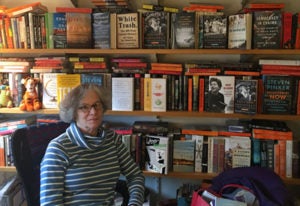 Wendy Wolf[/caption]
ENLIGHTENMENT NOW is our fifth book together. I became his editor around 2000, when Viking acquired The Blank Slate. Steve was already well known for his work in language and psychology, but that book marked a turn for him, a broader inquiry into human nature. I was immediately drawn to his provocative stance in the nature/nurture conversation, and to the breadth of evidence that he wanted to take in to make his argument. It became his first hardcover bestseller and was a finalist for the Pulitzer Prize, which was rewarding for a book of challenging intellectual ideas.
Since then, we’ve alternated between books about language (and writing) and books of about human nature and society. The Sense of Style (in which I accused him of taking his revenge on all the copyeditors who’d fiddled with his grammar over the years) was a fun respite after The Better Angels of our Nature, a huge and ambitious tome about the history of violence. Steve is obviously fiercely brilliant but he is also fearless when it comes to taking on controversial topics (intelligence, IQ, heredity, just for starts); and he tackles every topic with passion, from complicated neurology and deep philosophy to the finer points of constructing sentence trees. He and I have argued over everything from split personalities to split infinitives, but I always enjoy our editorial battles. He’s open to new ideas, and he has a great sense of humor and a useful fluency in popular culture. He works hard to get it right for every reader, not just his pointy-headed colleagues in the academic community.
Steve is also a lot of fun to publish because he’s such a good sport and game for almost anything including, most recently, doing a book interview on ice skates at Rockefeller Center (true fact). He’s even enthusiastic about author tours. “I know it’s mandatory for authors to say they hate them,” he recently told me, “but if I spend two years writing a book, I sure want to tell people about it!”
[caption id="attachment_9758" align="alignleft" width="251"]
Wendy Wolf[/caption]
ENLIGHTENMENT NOW is our fifth book together. I became his editor around 2000, when Viking acquired The Blank Slate. Steve was already well known for his work in language and psychology, but that book marked a turn for him, a broader inquiry into human nature. I was immediately drawn to his provocative stance in the nature/nurture conversation, and to the breadth of evidence that he wanted to take in to make his argument. It became his first hardcover bestseller and was a finalist for the Pulitzer Prize, which was rewarding for a book of challenging intellectual ideas.
Since then, we’ve alternated between books about language (and writing) and books of about human nature and society. The Sense of Style (in which I accused him of taking his revenge on all the copyeditors who’d fiddled with his grammar over the years) was a fun respite after The Better Angels of our Nature, a huge and ambitious tome about the history of violence. Steve is obviously fiercely brilliant but he is also fearless when it comes to taking on controversial topics (intelligence, IQ, heredity, just for starts); and he tackles every topic with passion, from complicated neurology and deep philosophy to the finer points of constructing sentence trees. He and I have argued over everything from split personalities to split infinitives, but I always enjoy our editorial battles. He’s open to new ideas, and he has a great sense of humor and a useful fluency in popular culture. He works hard to get it right for every reader, not just his pointy-headed colleagues in the academic community.
Steve is also a lot of fun to publish because he’s such a good sport and game for almost anything including, most recently, doing a book interview on ice skates at Rockefeller Center (true fact). He’s even enthusiastic about author tours. “I know it’s mandatory for authors to say they hate them,” he recently told me, “but if I spend two years writing a book, I sure want to tell people about it!”
[caption id="attachment_9758" align="alignleft" width="251"]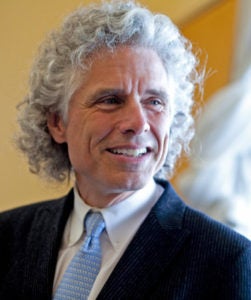 Steven Pinker[/caption]
What was involved in the editor/author process as ENLIGHTENMENT NOW went from initial concept to its final form?
ENLIGHTENMENT NOW took several major leaps and turns from the book we originally planned. It was conceived as an outgrowth of a New Republic piece Steve wrote called “Science is not your Enemy,” and was meant to be a short polemic defending science’s contribution to civilization. As Steve began to follow the data, the book’s themes and parameters grew, and we wound up with many hundreds of pages of manuscript (and many charts and graphs) outlining the progress we had made in so many areas of human experience and the significant role that the Enlightenment virtues—reason, rationality, and humanism—had played in that progress. Then Trump happened. The day after the election, Steve and I had a long talk about the challenges of publishing a book trumpeting the triumph of reason at such a frightening moment, and realized that now more than ever we needed to shine a light on the good news in the world (and there is plenty of it), and come up with a framework to help understand why it all seemed so dark, and specifically to track the origins of the tribalism that infects politics and society today.
Looking at the range of themes, values and questions addressed, why is this such an important book for our times and today’s readers?
This book is counterprograming to the gloom and doom in our current discourse (all across the political spectrum), but it’s no Polllyanna-ish dream of easy Utopia. Conquering disease, fighting illiteracy, defending human rights, saving children’s lives, eliminating war—these are all tough battles but we are winning them, but it’s not because of natural evolution or continental drift. The real drivers for progress are found in the law, in social programs that protect the vulnerable, in science that fights against climate change, and in books! World literacy turns out to be one of the biggest drivers of peace and justice.
Steven Pinker[/caption]
What was involved in the editor/author process as ENLIGHTENMENT NOW went from initial concept to its final form?
ENLIGHTENMENT NOW took several major leaps and turns from the book we originally planned. It was conceived as an outgrowth of a New Republic piece Steve wrote called “Science is not your Enemy,” and was meant to be a short polemic defending science’s contribution to civilization. As Steve began to follow the data, the book’s themes and parameters grew, and we wound up with many hundreds of pages of manuscript (and many charts and graphs) outlining the progress we had made in so many areas of human experience and the significant role that the Enlightenment virtues—reason, rationality, and humanism—had played in that progress. Then Trump happened. The day after the election, Steve and I had a long talk about the challenges of publishing a book trumpeting the triumph of reason at such a frightening moment, and realized that now more than ever we needed to shine a light on the good news in the world (and there is plenty of it), and come up with a framework to help understand why it all seemed so dark, and specifically to track the origins of the tribalism that infects politics and society today.
Looking at the range of themes, values and questions addressed, why is this such an important book for our times and today’s readers?
This book is counterprograming to the gloom and doom in our current discourse (all across the political spectrum), but it’s no Polllyanna-ish dream of easy Utopia. Conquering disease, fighting illiteracy, defending human rights, saving children’s lives, eliminating war—these are all tough battles but we are winning them, but it’s not because of natural evolution or continental drift. The real drivers for progress are found in the law, in social programs that protect the vulnerable, in science that fights against climate change, and in books! World literacy turns out to be one of the biggest drivers of peace and justice.
TELL ME MORE: Random House’s Andy Ward on Kelly Corrigan’s New Book
January 8, 2018
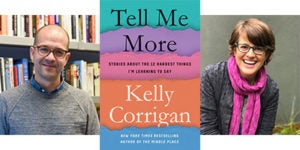 In her new Random House book, TELL ME MORE: Stories About the 12 Hardest Things I’m Learning to Say, New York Times bestselling author Kelly Corrigan swings between meditations on life with a preoccupied husband and two mercurial teenage daughters to profound observations on love and loss. Kelly’s editor, Andy Ward, Vice President, Editor in Chief, Random House, was closely involved with the creation of this collection of stories and shares insights into his impressions of Kelly’s voice on the page, their editor/author working relationship, and who will find her new stories most beneficial in this Three Questions for an Editor interview.
In her new Random House book, TELL ME MORE: Stories About the 12 Hardest Things I’m Learning to Say, New York Times bestselling author Kelly Corrigan swings between meditations on life with a preoccupied husband and two mercurial teenage daughters to profound observations on love and loss. Kelly’s editor, Andy Ward, Vice President, Editor in Chief, Random House, was closely involved with the creation of this collection of stories and shares insights into his impressions of Kelly’s voice on the page, their editor/author working relationship, and who will find her new stories most beneficial in this Three Questions for an Editor interview.
 In TELL ME MORE, Kelly Corrigan writes about experiences that are both intensely personal and universally relatable. What are the keys to her ability to draw readers into her life and prompt them to examine their own?
[caption id="attachment_9124" align="alignright" width="300"]
In TELL ME MORE, Kelly Corrigan writes about experiences that are both intensely personal and universally relatable. What are the keys to her ability to draw readers into her life and prompt them to examine their own?
[caption id="attachment_9124" align="alignright" width="300"]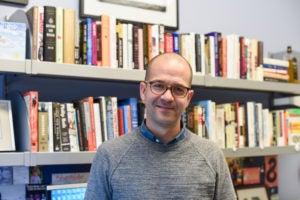 Andy Ward
Andy Ward(c) Danielle Siess[/caption] Three main keys, I’d say: humor, intelligence, and honesty. (Okay, and a fourth: a rare, instinctive sense of what is interesting in any given scene or moment. Good observers tell good stories.) Kelly knows how to draw a compelling scene, but it’s her honesty – her vulnerability and openness as a narrator, her willingness to portray her life as, at times, something of a mess – that resonates for me. Kelly doesn’t pretend to hold the secret to a happy life. She doesn’t pretend her family is perfect. She doesn’t gloss over her mistakes (see: “It’s Like This”) or her less-becoming impulses (“I Was Wrong”). That kind of honesty keeps the reader from feeling defensive, and maybe encourages them to engage in some introspection of their own. How would you describe the editorial process involved in putting TELL ME MORE together with the author – in terms of shaping the narrative and organizing the flow of the chapters? [caption id="attachment_9125" align="alignleft" width="225"]
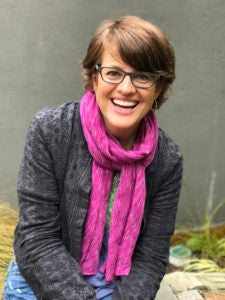 Kelly Corrigan (c) Mellie T Williams[/caption]
I would describe it as highly iterative. As Kelly drafted and redrafted, the list of phrases in the book expanded and contracted and expanded again, from 10 to 8 to 14 to 12. The phrases themselves also shifted and evolved, as Kelly wrote her way down to the essence of things. One essay, “You Got This,” eventually morphed into “Good Enough,” which is less of a pep-talky bromide and more of a portal into the idea of acceptance. Another one of the essays, “I Was Wrong,” was initially titled “I’m Sorry,” and Kelly and I went back and forth on this, with me arguing that “I’m Sorry” was more universal and, thus, more relatable, and Kelly arguing that “I Was Wrong” was more powerful and harder to say and, in fact, far more meaningful in that it suggested real accountability. She was right, of course. That’s a battle I was only too happy to lose. The book is better because of it.
Who do you think will get the most out of reading this book and why?
Given my biases here, that’s a hard one to answer objectively. But in that spirit, I guess I’d say: anyone with kids, anyone who has had a brush with mortality, anyone who bolts awake at 3am, convinced that they are failing on every possible front, or anyone who is at the time of their lives when they are dealing with aging or infirm parents, and all of the pain and confusion and bewildering existential stuff that goes along with that. That’s an extremely wide swath of people, I know, but then again, this is a book that is ultimately about acceptance of our flaws, the desire to be better, and the search for what is truly important in life. I’m calling that universal.
Kelly Corrigan reads an excerpt from the "I Love You" chapter of TELL ME MORE:
Kelly Corrigan (c) Mellie T Williams[/caption]
I would describe it as highly iterative. As Kelly drafted and redrafted, the list of phrases in the book expanded and contracted and expanded again, from 10 to 8 to 14 to 12. The phrases themselves also shifted and evolved, as Kelly wrote her way down to the essence of things. One essay, “You Got This,” eventually morphed into “Good Enough,” which is less of a pep-talky bromide and more of a portal into the idea of acceptance. Another one of the essays, “I Was Wrong,” was initially titled “I’m Sorry,” and Kelly and I went back and forth on this, with me arguing that “I’m Sorry” was more universal and, thus, more relatable, and Kelly arguing that “I Was Wrong” was more powerful and harder to say and, in fact, far more meaningful in that it suggested real accountability. She was right, of course. That’s a battle I was only too happy to lose. The book is better because of it.
Who do you think will get the most out of reading this book and why?
Given my biases here, that’s a hard one to answer objectively. But in that spirit, I guess I’d say: anyone with kids, anyone who has had a brush with mortality, anyone who bolts awake at 3am, convinced that they are failing on every possible front, or anyone who is at the time of their lives when they are dealing with aging or infirm parents, and all of the pain and confusion and bewildering existential stuff that goes along with that. That’s an extremely wide swath of people, I know, but then again, this is a book that is ultimately about acceptance of our flaws, the desire to be better, and the search for what is truly important in life. I’m calling that universal.
Kelly Corrigan reads an excerpt from the "I Love You" chapter of TELL ME MORE:
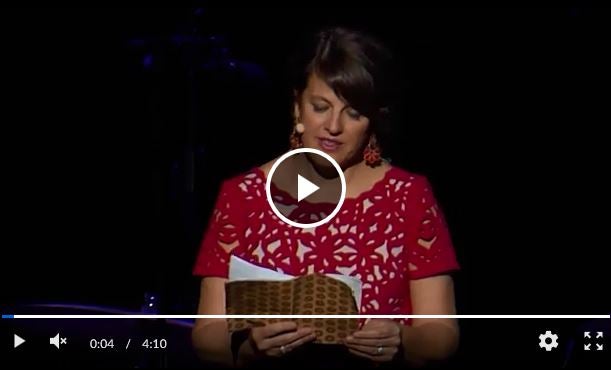
Go Inside YA Author Marie Lu’s World with Putnam Young Readers’ Jennifer Besser
September 14, 2017
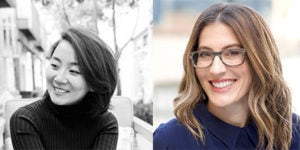 Jennifer Besser, President & Publisher, G.P. Putnam’s Sons Books for Young Readers, has been the editor of seven books by #1 bestselling author Marie Lu, including her newest, WARCROSS, published this week to much enthusiasm, buzz and acclaim.
Jennifer Besser, President & Publisher, G.P. Putnam’s Sons Books for Young Readers, has been the editor of seven books by #1 bestselling author Marie Lu, including her newest, WARCROSS, published this week to much enthusiasm, buzz and acclaim.
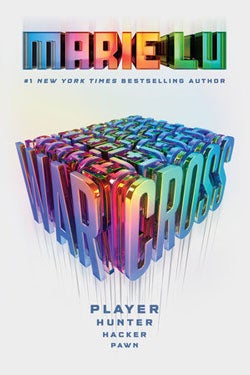 What characteristics in Marie Lu’s writing and storytelling first attracted you to her as an editor and distinguish her books, most notably WARCROSS, in the YA marketplace?
Eleven years ago, I read Marie’s first novel on submission. It wasn’t there yet and it didn’t sell (this story has a happy ending!), but there were moments in that book that I’ve never forgotten. Then in 2010, LEGEND went out on submission and I was blown away. I remember the exact moment I fell for the story—it was a twist so good that I sort of sat back in admiration for a beat…and then dove right back in to finish. That first novel stuck with me in big part because of Marie’s cinematic writing—it’s visual and it moves at a terrific pace, without ever sacrificing depth. And the good news is, Marie couldn’t shake that first novel either. She went back and rethought it and created something incredibly inventive and in a completely new genre for her. We bought it last year and I can’t wait to share it with everyone soon.
How would you describe the editor/author relationship and process that has developed between you and Marie over the years?
Marie has so much story to tell, in life and on the page, so to be both her editor and her friend is a terrific thing. After seven novels together, we’ve established a lot of trust and a bit of a shorthand. We can zero in very quickly on where the crutches are and when they need to be kicked out from under the storytelling. She’s a fantastic, brave reviser and a dream to work with.
What elements of WARCROSS do you think will resonate mostly strongly with readers?
Marie’s background is in video game design and she puts that experience to work so beautifully here. She makes it easy and fun for readers to fall into the high-stakes world of WARCROSS and a near-future Tokyo, while at the same time raising thoughtful questions about the intersection of morality and technology. There’s adventure, romance, bounty hunters, a young billionaire, some enviable rainbow-colored hair, and a Corgi. Oh, and a few hidden gems for Marie’s LEGEND fans.
What characteristics in Marie Lu’s writing and storytelling first attracted you to her as an editor and distinguish her books, most notably WARCROSS, in the YA marketplace?
Eleven years ago, I read Marie’s first novel on submission. It wasn’t there yet and it didn’t sell (this story has a happy ending!), but there were moments in that book that I’ve never forgotten. Then in 2010, LEGEND went out on submission and I was blown away. I remember the exact moment I fell for the story—it was a twist so good that I sort of sat back in admiration for a beat…and then dove right back in to finish. That first novel stuck with me in big part because of Marie’s cinematic writing—it’s visual and it moves at a terrific pace, without ever sacrificing depth. And the good news is, Marie couldn’t shake that first novel either. She went back and rethought it and created something incredibly inventive and in a completely new genre for her. We bought it last year and I can’t wait to share it with everyone soon.
How would you describe the editor/author relationship and process that has developed between you and Marie over the years?
Marie has so much story to tell, in life and on the page, so to be both her editor and her friend is a terrific thing. After seven novels together, we’ve established a lot of trust and a bit of a shorthand. We can zero in very quickly on where the crutches are and when they need to be kicked out from under the storytelling. She’s a fantastic, brave reviser and a dream to work with.
What elements of WARCROSS do you think will resonate mostly strongly with readers?
Marie’s background is in video game design and she puts that experience to work so beautifully here. She makes it easy and fun for readers to fall into the high-stakes world of WARCROSS and a near-future Tokyo, while at the same time raising thoughtful questions about the intersection of morality and technology. There’s adventure, romance, bounty hunters, a young billionaire, some enviable rainbow-colored hair, and a Corgi. Oh, and a few hidden gems for Marie’s LEGEND fans. Riverhead’s Sarah McGrath on Gabriel Tallent’s Remarkable Debut and a Girl Named Turtle
August 29, 2017
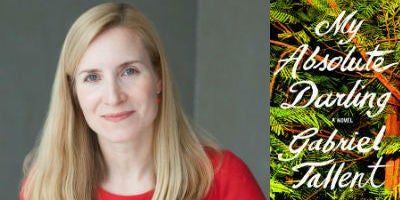 In this Three Questions for an Editor interview with Sarah McGrath, Vice President, Editor in Chief, Riverhead Books, she shares insights into gifted debut author Gabriel Tallent and his exceptional debut novel, MY ABSOLUTE DARLING, which goes on sale from Riverhead today.
In this Three Questions for an Editor interview with Sarah McGrath, Vice President, Editor in Chief, Riverhead Books, she shares insights into gifted debut author Gabriel Tallent and his exceptional debut novel, MY ABSOLUTE DARLING, which goes on sale from Riverhead today.
 Gabriel Tallent[/caption]
In this brilliant, immersive, all-consuming read set in the wilds of the northern California coast, 14-year-old Turtle Alveston emerges as one of the most unforgettable characters in modern literary fiction. In advance reading copies of MY ABSOLUTE DARLING, Sarah wrote, in part, “As Turtle fights for her own soul through acts of physical and emotional courage, we watch, heart in throat, as she struggles to become her own hero – and in the process becomes ours as well. There is darkness along the way, but ultimately this is a survival story with a heart-wrenching redemptive arc. A love story, in more ways than one.”
How did you discover Gabriel Tallent and what were your initial impressions of him and his writing?
I first read the manuscript in November 2015 when it came to me from his agent. I was struck immediately both by the writing – the shocking, thrilling originality of the language – and by the magnetism of the main character, a girl who was at once so fierce and so vulnerable that I wanted only to spend as much time with her as possible, to track her experiences and survival. I disappeared into the story and I’m still not sure if I ever fully surfaced.
What was involved in the editor/author process as MY ABSOLUTE DARLING went from manuscript to book form?
Gabriel was inspiring to work with. He approached the edit with an incredible focus and intensity, engaging deeply with every question and suggestion I threw his way, even when he didn’t agree. It led us into some wonderfully involved discussions and explorations. I enjoyed every minute of it.
What is it about this book that resonates so strongly with readers?
It’s Turtle, I think. The language is breath-taking; the wilderness is written with such beauty and power that it becomes a character itself; but the thing that I think grabs readers’ hearts from the very beginning and never lets go is the novel’s protagonist, Turtle. She is so real, so herself, so unusual, that you know, as a reader, that you’re going to be changed just by knowing her.
Gabriel Tallent[/caption]
In this brilliant, immersive, all-consuming read set in the wilds of the northern California coast, 14-year-old Turtle Alveston emerges as one of the most unforgettable characters in modern literary fiction. In advance reading copies of MY ABSOLUTE DARLING, Sarah wrote, in part, “As Turtle fights for her own soul through acts of physical and emotional courage, we watch, heart in throat, as she struggles to become her own hero – and in the process becomes ours as well. There is darkness along the way, but ultimately this is a survival story with a heart-wrenching redemptive arc. A love story, in more ways than one.”
How did you discover Gabriel Tallent and what were your initial impressions of him and his writing?
I first read the manuscript in November 2015 when it came to me from his agent. I was struck immediately both by the writing – the shocking, thrilling originality of the language – and by the magnetism of the main character, a girl who was at once so fierce and so vulnerable that I wanted only to spend as much time with her as possible, to track her experiences and survival. I disappeared into the story and I’m still not sure if I ever fully surfaced.
What was involved in the editor/author process as MY ABSOLUTE DARLING went from manuscript to book form?
Gabriel was inspiring to work with. He approached the edit with an incredible focus and intensity, engaging deeply with every question and suggestion I threw his way, even when he didn’t agree. It led us into some wonderfully involved discussions and explorations. I enjoyed every minute of it.
What is it about this book that resonates so strongly with readers?
It’s Turtle, I think. The language is breath-taking; the wilderness is written with such beauty and power that it becomes a character itself; but the thing that I think grabs readers’ hearts from the very beginning and never lets go is the novel’s protagonist, Turtle. She is so real, so herself, so unusual, that you know, as a reader, that you’re going to be changed just by knowing her. S&G’s Julie Grau on Author Janelle Brown and Her New Summer Page-Turner
July 11, 2017
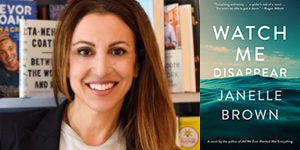 In our Three Questions for an Editor feature, Julie Grau, Senior Vice President, Publisher, Spiegel & Grau, opens a window into the editorial relationship between her and author Janelle Brown, with a focus on WATCH ME DISAPPEAR. Published July 11, this “spider’s web of a novel” draws readers in from page one. The disappearance of a
In our Three Questions for an Editor feature, Julie Grau, Senior Vice President, Publisher, Spiegel & Grau, opens a window into the editorial relationship between her and author Janelle Brown, with a focus on WATCH ME DISAPPEAR. Published July 11, this “spider’s web of a novel” draws readers in from page one. The disappearance of a
 Janelle Brown[/caption]
How did you first discover Janelle and how has the editor/author process evolved from working on her first book to this new one?
Agent Susan Golomb submitted Janelle’s first novel, ALL WE EVER WANTED WAS EVERYTHING, to me in the early days of the imprint. I remember reading the novel the day it arrived, flat on the floor of my office (my back hurt) and marveling at Janelle’s amazing braided storyline and characters—so impressive for a first-time novelist. I knew she had a long career ahead of her—she was so good and assured. We have now worked together on three novels with two more (hooray!) on the horizon. We speak in a sort of editorial shorthand—Janelle is really great at taking notes and coming back with a second draft that is fresh, inventive, and surprising. By book four we’ll be approaching old married status, which makes me happy.
Who do you see as the primary reader/audience for this novel and what thoughts and discussions it may trigger?
WATCH ME DISAPPEAR was the book club read at the spring Random House Open House event and it provoked lively discussion. It drew comparisons to GONE GIRL and BIG LITTLE LIES. Pretty much everyone loved hating Billie and had no idea how the novel would end until the very last lines of the very last paragraph. The book club participants said they’d recommend it to friends who were parents—the question of whether Billie was a good mother or a horrible mother is ripe for debate.
Janelle Brown[/caption]
How did you first discover Janelle and how has the editor/author process evolved from working on her first book to this new one?
Agent Susan Golomb submitted Janelle’s first novel, ALL WE EVER WANTED WAS EVERYTHING, to me in the early days of the imprint. I remember reading the novel the day it arrived, flat on the floor of my office (my back hurt) and marveling at Janelle’s amazing braided storyline and characters—so impressive for a first-time novelist. I knew she had a long career ahead of her—she was so good and assured. We have now worked together on three novels with two more (hooray!) on the horizon. We speak in a sort of editorial shorthand—Janelle is really great at taking notes and coming back with a second draft that is fresh, inventive, and surprising. By book four we’ll be approaching old married status, which makes me happy.
Who do you see as the primary reader/audience for this novel and what thoughts and discussions it may trigger?
WATCH ME DISAPPEAR was the book club read at the spring Random House Open House event and it provoked lively discussion. It drew comparisons to GONE GIRL and BIG LITTLE LIES. Pretty much everyone loved hating Billie and had no idea how the novel would end until the very last lines of the very last paragraph. The book club participants said they’d recommend it to friends who were parents—the question of whether Billie was a good mother or a horrible mother is ripe for debate. Crown Senior Editor Kevin Doughten on the Making of SHATTERED: Inside Hillary Clinton’s Doomed Campaign
May 10, 2017
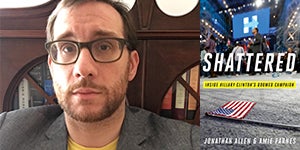 Moving blow-by-blow from the campaign’s difficult birth through the bewildering terror of election night, Crown’s #1 New York Times bestseller SHATTERED by Jonathan Allen and Amie Parnes tells an unforgettable story both political and personal, that will change the way readers understand just what happened to America on November 8, 2016.
Moving blow-by-blow from the campaign’s difficult birth through the bewildering terror of election night, Crown’s #1 New York Times bestseller SHATTERED by Jonathan Allen and Amie Parnes tells an unforgettable story both political and personal, that will change the way readers understand just what happened to America on November 8, 2016.
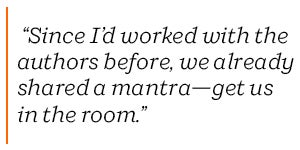 include—whether it was actually a strong building block in the story or just repetitive of a point that had already been made. Since I’d worked with the authors before, we already shared a mantra—get us in the room. Readers needed to see the campaign through the eyes of the people who lived it, in all its detail, and that meant working with sources to get the clearest understanding of what they heard, saw, and thought at the time. The goal was to create a book that said something important about why the election turned out as it did and also took the reader along for an exciting, thrilling, depressing/exhilarating ride.
Who do you see as the primary audience for SHATTERED and what do you feel are the most important takeaways for readers of the book?
I don’t know that the book has a primary audience, but rather a few. I think there were a lot of people who voted for Hillary who felt in the wake of the election that they still didn’t have a firm grasp on what happened, why she didn’t win. For those people I think the book offers an alternative narrative, or at least a complementary one, to the story that it was all James Comey, or all Russia. For Bernie fans, there’s justification here that their man had a better grasp of the electorate and ultimately didn’t quite get a fair shake from the party. And of course there are a lot of readers who just plain don’t like Hillary and will find validation here that she herself was a major contributor to her own loss. Beyond that, I think the most important takeaways are probably for the Democratic party. The authors contend that this was a winnable election, and without taking real stock of the unforced errors up and down the process it will be hard for Democrats to avoid déjà vu in 2018 and beyond.
include—whether it was actually a strong building block in the story or just repetitive of a point that had already been made. Since I’d worked with the authors before, we already shared a mantra—get us in the room. Readers needed to see the campaign through the eyes of the people who lived it, in all its detail, and that meant working with sources to get the clearest understanding of what they heard, saw, and thought at the time. The goal was to create a book that said something important about why the election turned out as it did and also took the reader along for an exciting, thrilling, depressing/exhilarating ride.
Who do you see as the primary audience for SHATTERED and what do you feel are the most important takeaways for readers of the book?
I don’t know that the book has a primary audience, but rather a few. I think there were a lot of people who voted for Hillary who felt in the wake of the election that they still didn’t have a firm grasp on what happened, why she didn’t win. For those people I think the book offers an alternative narrative, or at least a complementary one, to the story that it was all James Comey, or all Russia. For Bernie fans, there’s justification here that their man had a better grasp of the electorate and ultimately didn’t quite get a fair shake from the party. And of course there are a lot of readers who just plain don’t like Hillary and will find validation here that she herself was a major contributor to her own loss. Beyond that, I think the most important takeaways are probably for the Democratic party. The authors contend that this was a winnable election, and without taking real stock of the unforced errors up and down the process it will be hard for Democrats to avoid déjà vu in 2018 and beyond. Berkley’s Cindy Hwang on Editing Karen White’s New Kind of Romance
April 10, 2017
 This Three Question for an Editor series interview features Cindy Hwang, Vice President, Editorial Director, Berkley, who takes us inside her work with New York Times bestselling author Karen White, with a focus on Karen’s latest novel, THE NIGHT THE LIGHTS WENT OUT, which Berkley is publishing on Tuesday, April 11. Cindy began
This Three Question for an Editor series interview features Cindy Hwang, Vice President, Editorial Director, Berkley, who takes us inside her work with New York Times bestselling author Karen White, with a focus on Karen’s latest novel, THE NIGHT THE LIGHTS WENT OUT, which Berkley is publishing on Tuesday, April 11. Cindy began
 How does Karen’s newest book, THE NIGHT THE LIGHTS WENT OUT, fit into the evolution of her writing career and what was your primary role throughout the editorial process?
I remember the first time Karen pitched me her idea for THE NIGHT THE LIGHTS WENT OUT, and I was excited because Karen wanted to set it close to her actual home in the Atlanta suburbs. But it was still very early in the process, and sometimes ideas don’t pan out. At that early stage, I always keep an open mind so Karen can use me as a sounding board to help develop her ideas. What we’ve discovered from working together is that Karen needs to let an idea percolate for a long time—and that she often struggles with writing synopses during the proposal stage. So now, when she’s ready to show me her idea when it’s developed enough, we skip the synopsis and go straight to the opening chapters. And this is what we did for THE NIGHT THE LIGHTS WENT OUT.
I knew from those first chapters that Karen had written something very special and already created some fabulous characters, so I was confident that Karen was on the right track. THE NIGHT THE LIGHTS WENT OUT has some of the key features that Karen likes to include in all her novels, mainly an exploration of women’s relationships, both familial and not, but the very contemporary setting and characters definitely marked a change from some of Karen’s previous novels which always had a strong historical element to the plots. There’s also one in THE NIGHT THE LIGHTS WENT OUT as well but it’s clearly the contemporary story that is the focus, not the historical one.
Who do you see as Karen’s most loyal readers and what about her books keeps them coming back for more stories, year after year?
[caption id="attachment_5774" align="alignright" width="200"]
How does Karen’s newest book, THE NIGHT THE LIGHTS WENT OUT, fit into the evolution of her writing career and what was your primary role throughout the editorial process?
I remember the first time Karen pitched me her idea for THE NIGHT THE LIGHTS WENT OUT, and I was excited because Karen wanted to set it close to her actual home in the Atlanta suburbs. But it was still very early in the process, and sometimes ideas don’t pan out. At that early stage, I always keep an open mind so Karen can use me as a sounding board to help develop her ideas. What we’ve discovered from working together is that Karen needs to let an idea percolate for a long time—and that she often struggles with writing synopses during the proposal stage. So now, when she’s ready to show me her idea when it’s developed enough, we skip the synopsis and go straight to the opening chapters. And this is what we did for THE NIGHT THE LIGHTS WENT OUT.
I knew from those first chapters that Karen had written something very special and already created some fabulous characters, so I was confident that Karen was on the right track. THE NIGHT THE LIGHTS WENT OUT has some of the key features that Karen likes to include in all her novels, mainly an exploration of women’s relationships, both familial and not, but the very contemporary setting and characters definitely marked a change from some of Karen’s previous novels which always had a strong historical element to the plots. There’s also one in THE NIGHT THE LIGHTS WENT OUT as well but it’s clearly the contemporary story that is the focus, not the historical one.
Who do you see as Karen’s most loyal readers and what about her books keeps them coming back for more stories, year after year?
[caption id="attachment_5774" align="alignright" width="200"]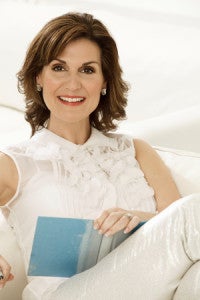 Karen White, photo by Claudio Marinesco[/caption]
We recently had an event in Charleston that brought readers around the country together to celebrate the publication of Karen’s latest novel, THE GUESTS ON SOUTH BATTERY, and what we discovered was that Karen’s readers are generational. There were so many mothers & daughters who came together to meet Karen as well as groups of friends and just plain families. And many traveled across the country for this event. Many of them had read Karen for years and loved not only the southern setting of her novels but her focus on women and their relationships, as well as the carefully crafted mysteries that often provide the framework within which she can explore those relationships.
Karen White on Cindy Hwang and Berkley:
How would you describe your author/editor working relationship with Cindy and what have been the most important aspects of having Berkley as your book publishing home?
The one word that defines my working relationship with Cindy is trust. She trusts my instincts when choosing elements of my books (characters, setting, POV), and I trust her to give an honest evaluation on a finished manuscript. It’s the perfect author/editor relationship: Cindy never intrudes on the creative process, but is terrific at brainstorming ideas and has the brilliant ability to pinpoint what’s not working even when I can’t–and she’s always right!
I’ve been working with Cindy and Berkley for 23 books in 11 years. Every book I’ve ever written is now in print under the same logo. I love the continuity of having my backlist with the same publisher as my current titles, and the longevity means that my entire Berkley team (editorial, marketing, sales, art and publicity) all recognize what a “Karen White” book is even before my latest manuscript lands on Cindy’s desk. This understanding has meant a concentrated effort to brand me and my books so that the rest of the world knows, too.
Karen White, photo by Claudio Marinesco[/caption]
We recently had an event in Charleston that brought readers around the country together to celebrate the publication of Karen’s latest novel, THE GUESTS ON SOUTH BATTERY, and what we discovered was that Karen’s readers are generational. There were so many mothers & daughters who came together to meet Karen as well as groups of friends and just plain families. And many traveled across the country for this event. Many of them had read Karen for years and loved not only the southern setting of her novels but her focus on women and their relationships, as well as the carefully crafted mysteries that often provide the framework within which she can explore those relationships.
Karen White on Cindy Hwang and Berkley:
How would you describe your author/editor working relationship with Cindy and what have been the most important aspects of having Berkley as your book publishing home?
The one word that defines my working relationship with Cindy is trust. She trusts my instincts when choosing elements of my books (characters, setting, POV), and I trust her to give an honest evaluation on a finished manuscript. It’s the perfect author/editor relationship: Cindy never intrudes on the creative process, but is terrific at brainstorming ideas and has the brilliant ability to pinpoint what’s not working even when I can’t–and she’s always right!
I’ve been working with Cindy and Berkley for 23 books in 11 years. Every book I’ve ever written is now in print under the same logo. I love the continuity of having my backlist with the same publisher as my current titles, and the longevity means that my entire Berkley team (editorial, marketing, sales, art and publicity) all recognize what a “Karen White” book is even before my latest manuscript lands on Cindy’s desk. This understanding has meant a concentrated effort to brand me and my books so that the rest of the world knows, too. Popular Company News
Our 38 New York Times Book Review “100 Notable Books of 2025”
November 27, 2025
The annual New York Times Book Review “100 Notable Books” list has arrived, honoring the year’s most compelling and influential works across fiction, nonfiction, and poetry.…
Five PRH Titles Recognized in New York Times Book Review’s “10 Best Books of 2025”
December 3, 2025
On Tuesday, December 2, the New York Times Book Review released their esteemed "10 Best Books of 2025", following last week's announcement of their "100 Notable…
David Szalay Wins the 2025 Booker Prize for FLESH
November 12, 2025
We’re thrilled to share that David Szalay has won the 2025 Booker Prize, one of the leading literary awards in the English-speaking world, for his novel…
Random House Children’s Books to Acquire Cherry Lake Publishing Group
November 11, 2025
Sleeping Bear Press, Tilbury House, and Other Cherry Lake Imprints to Join Random House Children’s Books, Maintaining Distinct Identities and Leadership. Random House Children’s Books (RHCB),…
Our 76th National Book Awards Winner: Omar El Akkad’s ONE DAY, EVERYONE WILL HAVE ALWAYS BEEN AGAINST THIS
November 20, 2025
On the night of November 19, 2025, the National Book Foundation, a nonprofit organization, announced the winners of the 76th National Book Awards, which celebrate the best literature…
Spotlighting Our Titles on Amazon’s Best Books of 2025
November 14, 2025
Amazon recently released its Best Books of 2025 list, compiled by the Amazon Editors after spending thousands of hours reading and evaluating an impressive range of…
Two PYR Titles Win 2025 NYT/NYPL Best Illustrated Children’s Books Awards
November 14, 2025
WIND WATCHERS by Micha Archer (Nancy Paulsen Books) and MAKING ART by Diana Ejaita (RISE x Penguin Workshop) have won 2025 New York Times / New…
Spotlighting Our Titles on Amazon’s Best Children’s Books of 2025
November 18, 2025
Penguin Young Readers and Random House Children's Books are thrilled to celebrate their incredible achievement of having over 20 titles featured on the must-read Amazon Best…
Penguin Random House Author Mychal Threets to Serve as 2026 National Library Week Honorary Chair
December 9, 2025
Mychal Threets, award-winning librarian, author of I'M SO HAPPY YOU'RE HERE (Random House Books for Young Readers), and new host of the children’s program “Reading Rainbow”, will…
